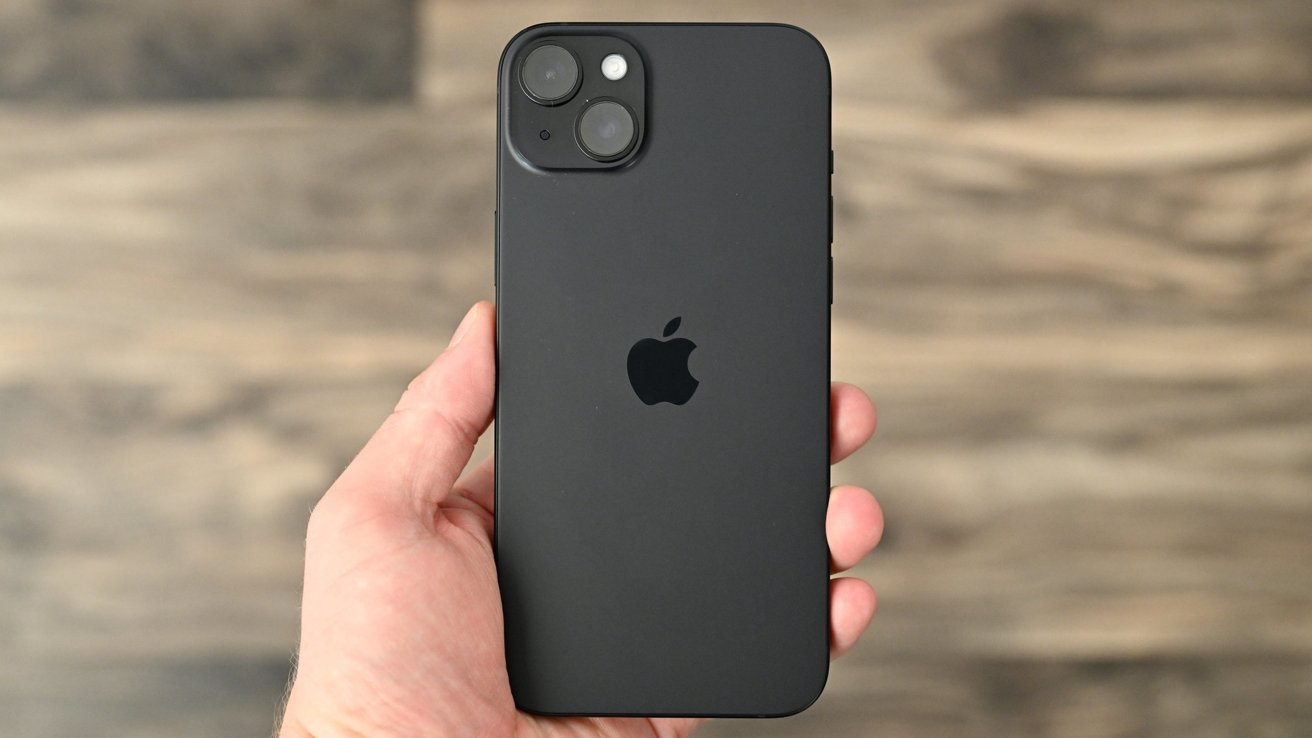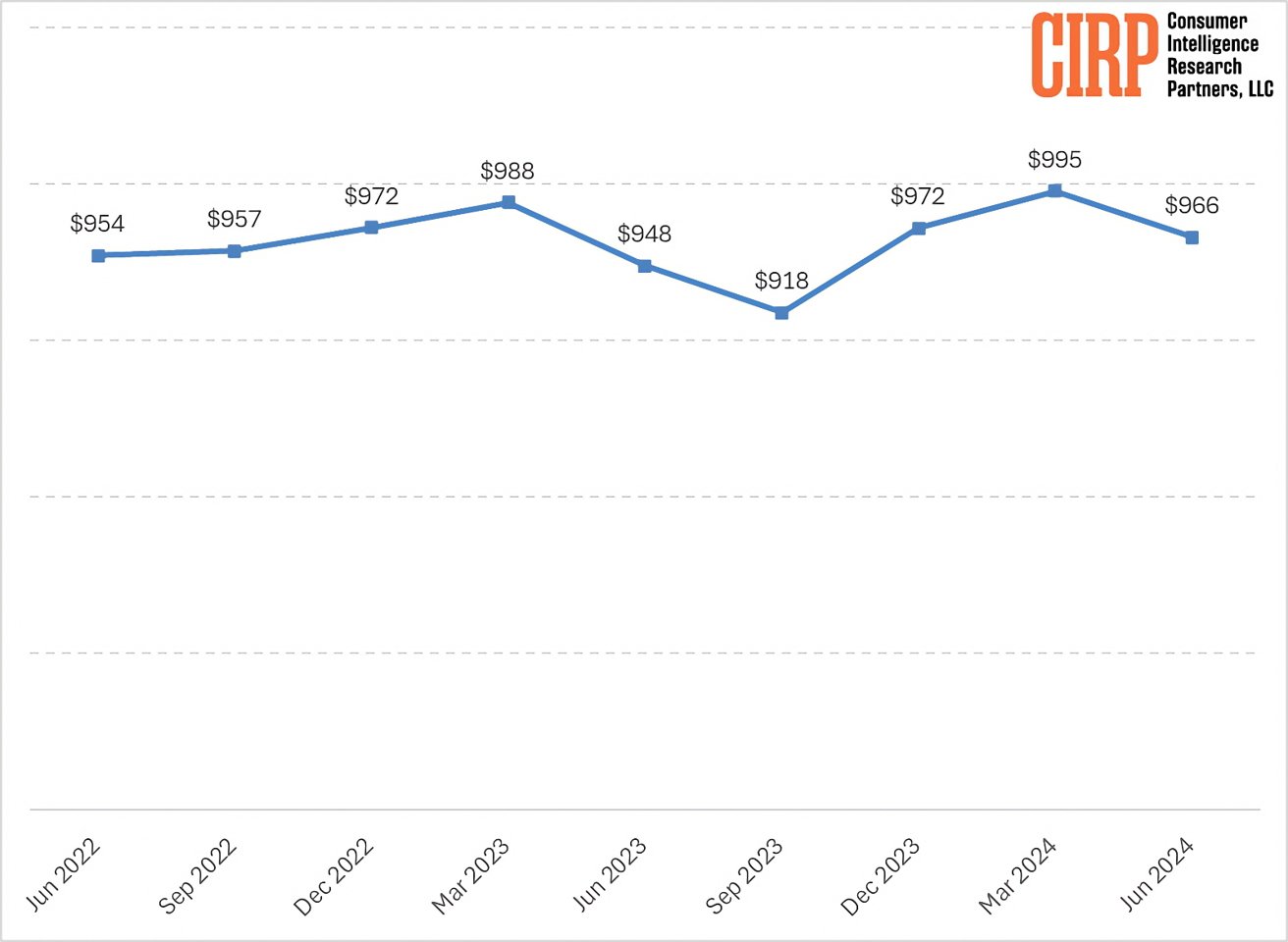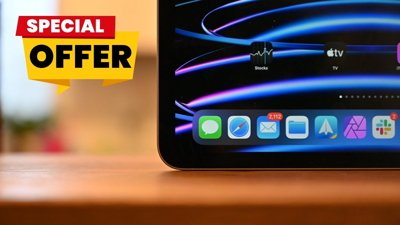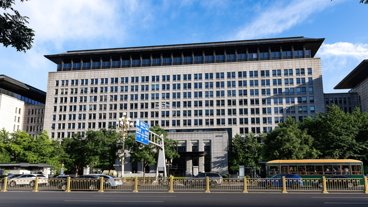A metric used to gauge iPhone sales performance suggests a decrease in the average selling price in the June 2024 quarter due to the popularity of older models.
Apple stopped reporting iPhones' Average Selling Price (ASP) in 2018. However, Consumer Intelligence Research Partners (CIRP) have maintained the US-WARP, which closely mirrors the ASP, minus the global scope and wholesale discounts.
In the June 2024 quarter, US-WARP was recorded at $966, representing a decline from $995 in the March 2024 quarter but shows an increase from $948 in the June 2023 quarter. Notably, the March 2024 figure was the highest ever estimated by CIRP.
The impact of older models
The sales shift towards older, less expensive iPhone models is a significant factor influencing US-WARP. The observed trend in the June 2024 quarter mirrors the decline seen in June 2023, a reflection of Apple's iPhone launch calendar.
As dedicated upgraders purchase new models soon after release, the remaining buyers in subsequent quarters are less inclined to buy the latest and more expensive models.
The shift has implications for Apple's sales strategy and investor expectations. While the overall unit sales remain high, the increased share of lower-priced models suggests a weaker sales quarter in revenue.
The impact on Apple's revenue is evident in the higher percentage of Android switchers and repeat iPhone buyers opting for less expensive models. As the company prepares to release its financial results on August 1, these insights provide a clearer understanding of the underlying sales dynamics and potential challenges ahead.
 Andrew Orr
Andrew Orr









 Christine McKee
Christine McKee
 Malcolm Owen
Malcolm Owen

 Charles Martin
Charles Martin


 Mike Wuerthele
Mike Wuerthele


-m.jpg)






10 Comments
Hopefully these buyers of older models are new to the Apple ecosystem resulting in long-term new customers who will also be buying additional services. All good for the bottom line.
First: CIRP isn't reporting facts. It's reporting a guesstimate based on data from their contacts within retail channels, blah, blah, blah, the accuracy of which is completely unknown in terms of how well it represents factual reality for Apple. That said, as iPhone speed, feature set and cameras have been more than enough to satisify the vast majority of people for at least several generations--and considering that iPhone design is essentially unchanged since the 12--it's not a stretch to think that more people than in the past, when upgrading an older iPhone or buying one for the first time, choose one of the older, cheaper models still current in Apple's lineup. And this would, of course, drive down the Average Selling Price of iPhone, which would reduce gross revenue on iPhone sales. BUT... does this matter? Presumably, these older, cheaper models are also more profitable, at least as a percentage of selling price and perhaps on a absolute basis. Would you rather make $400 on a $1000 phone or $430 on an $800 phone? Yes, those are invented numbers, but the point is that the net profit on each phone is the coin of the realm, not the ASP. We'll have to see how much of a "must have" upgrade Apple Intelligence turns out to be, but it seems like the first advance in years that could truly justify the purchase of the latest model phone for many more people. .
Still on iPhone 12 mini. My significant other has an iPhone 15 pro. The pro gives you the true iPhone experience. It’s just so damn huge and bulky though. If Steve Jobs was CEO it would be skinnier then the current iPhone SE